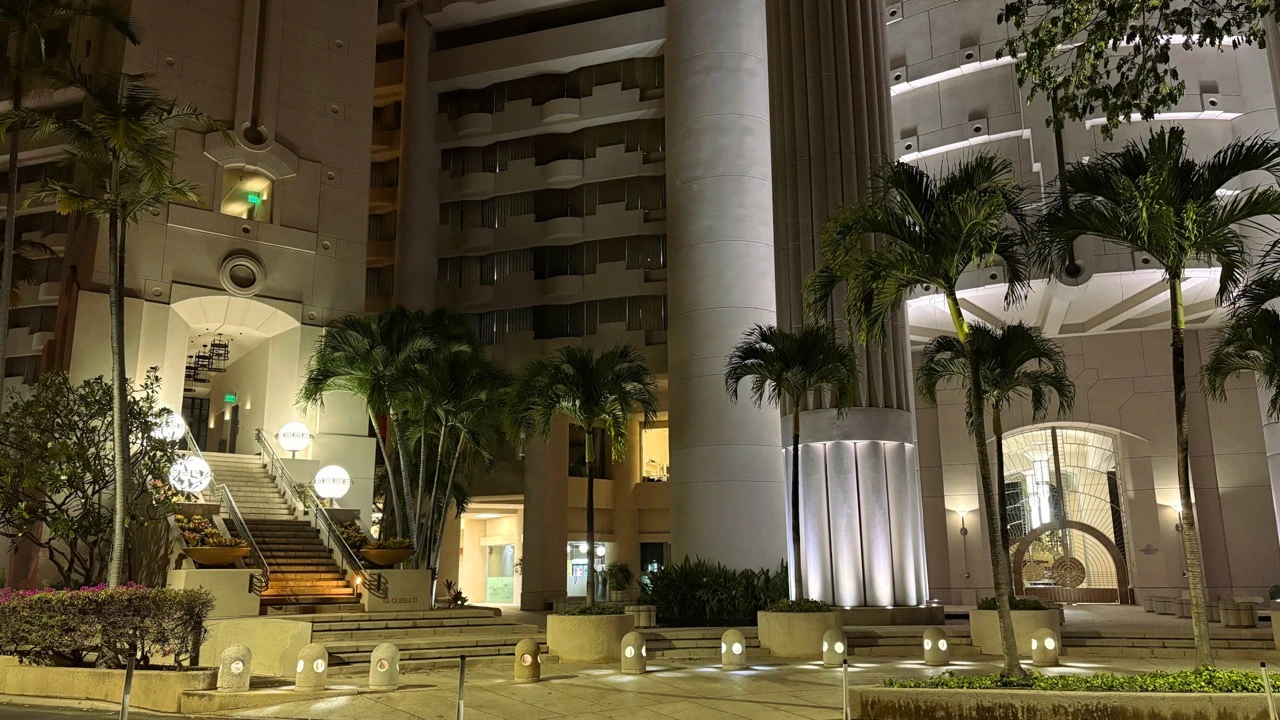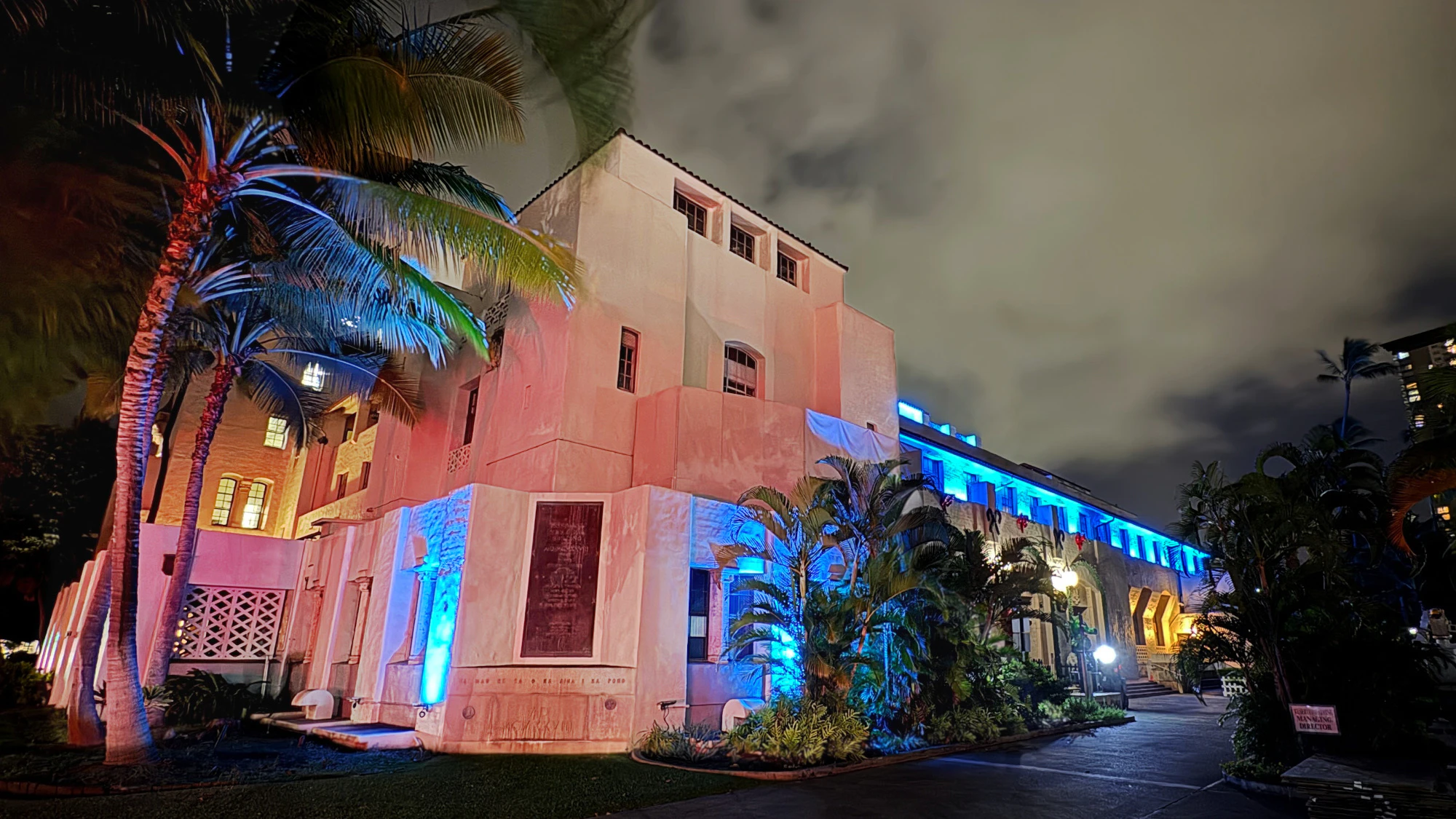King David Kalākaua called Mānoa “the Valley of the Rainbow.” Surrounded by mountain ridges on three sides, rainfall is a frequent visitor. The sun, crawling across the sky, catches each falling drop at just the right angle, refracting the light into arcs of color that stretch like aloha across the sky. In this valley, while nature performs its quiet magic, Hawaiian history and the ancient art of Chinese feng shui intertwine, creating a contemporary harmony between the land and the spirits that inhabit it.
This cool, wide valley is just minutes from town and has become a highly desirable place to live. Hawaiian royalty had homes in Mānoa to escape the hustle and bustle of town. Most notably, Queen Ka‘ahumanu, King Kamehameha’s favorite wife, visited often and passed away in her home there at the age of 64.
In ancient times, Hawaiians believed that gods and supernatural beings inhabited the valley, and research shows that up to eight heiau (temples) once existed in Mānoa. The sites for heiau were chosen because of their spiritual energy, and Mānoa Valley offered the perfect setting for such wahi pana (sacred places).
In the mid-1800s, after most of the heiau had already been destroyed, a Feng Shui master came to Hawai‘i. Working to develop his craft, Mr. Lum Ching hiked the mountains and valleys of Honolulu using a luo pan, a type of Chinese feng shui compass. Coming upon Mānoa, he saw a knoll near the back of the valley and made his way there. Standing upon that grassy hill within the valley, he aimed the luo pan out toward the ocean and found that the direction pointed due south. Lum Ching then aimed the compass along the surrounding mountains and realized the energy was exactly what he was looking for. The qi, the energy that flowed into the valley, culminated at a point called shui. This happened to be right where Lum Ching was standing. In Chinese culture, the belief is that if an ancestor were to be buried at such an energy point, it would have lasting positive effects of prosperity on their descendants.
Lum Ching brought his findings to the Chinese community, and 31 families worked together to pool their money. Saving nearly six months’ worth of wages, they founded the Lin Yee Chung Association to purchase the 27 acres of land that now forms the cemetery. Although the scenery of the valley had changed, the history and the spirituality remained.
What seems like a lifetime ago, when I’d only been working with Glen Grant for a few years, I was entrusted to host a group from an architectural firm on the old Ghost Hunters Bus Tour. We met at Glen’s bookstore, The Haunt, in Mo‘ili‘ili and headed out to our first stop, the Mānoa Chinese Cemetery, with permission, of course. Most of the 38 men and women were terrified, and it took a lot of encouragement to get them to board the bus. It took an equal amount of encouragement to convince them to get off the bus once we got to the cemetery.
I walked the group up the hill and stopped at a section below the huge banyan tree. On our left was the children’s section, where Glen once explained that children were placed here so they could keep each other company in the afterlife. Without warning and before I could even begin my storytelling, a wind appeared out of nowhere and tore through the cemetery, bending the skinny palm trees along the path.
Oddly, I could see everything happening: the leaves and loose grass blowing about, dirt swirling around in tiny tornadoes. However, I couldn’t hear or feel any of it. It seemed like I was in an invisible capsule. After several seconds, the feeling was gone. The wind stopped, and I looked around to find that all 38 architects were gone.
When I boarded the bus at the bottom of the hill, I asked the group leader what had happened. He said that the second the wind kicked up, they all ran immediately back to the bus. We continued the tour, but by the end of the night, the wind and the cemetery were all the group could talk about.
The following morning, I phoned my elder cousin, Keone, to tell him about my experience and ask what it might have been.
“That was the night marchers,” he told me. “Last night, the moon phase was Kāne. They march through that part of the cemetery, you know.”
“How come I wasn’t killed?” I asked. “I had no time to strip naked and lay face down.”
“That feeling you had of being encapsulated? You must have had ‘ohana in that procession because it sounds like they surrounded you and saved you,” he replied.
“What about the people on the tour?” I suddenly remembered that nothing happened to them.
Keone laughed and replied, “They did the smart thing. They ran.”





